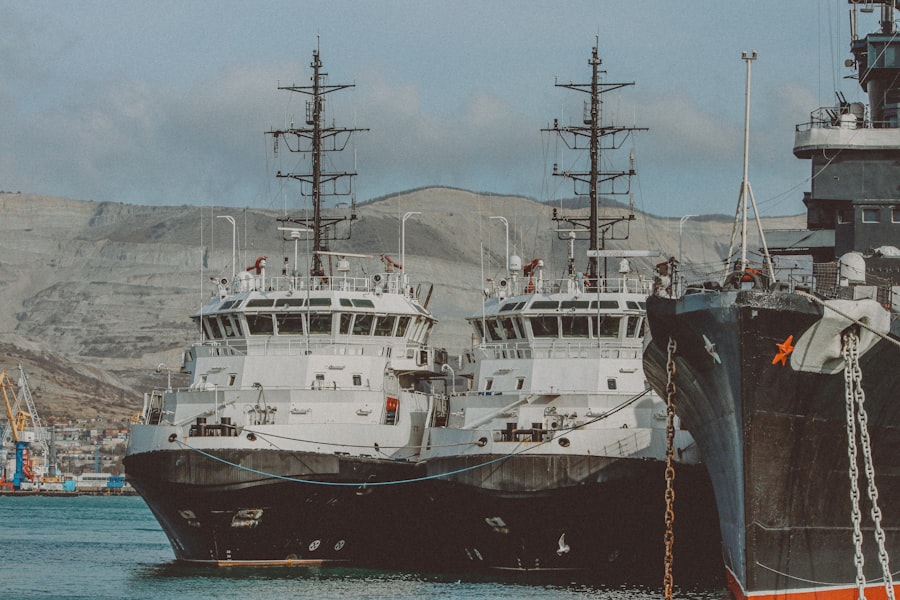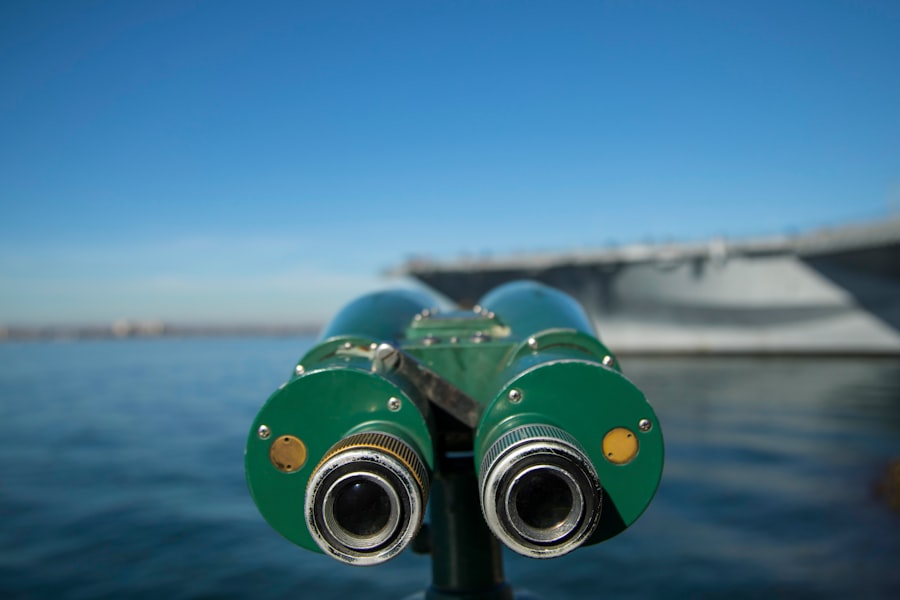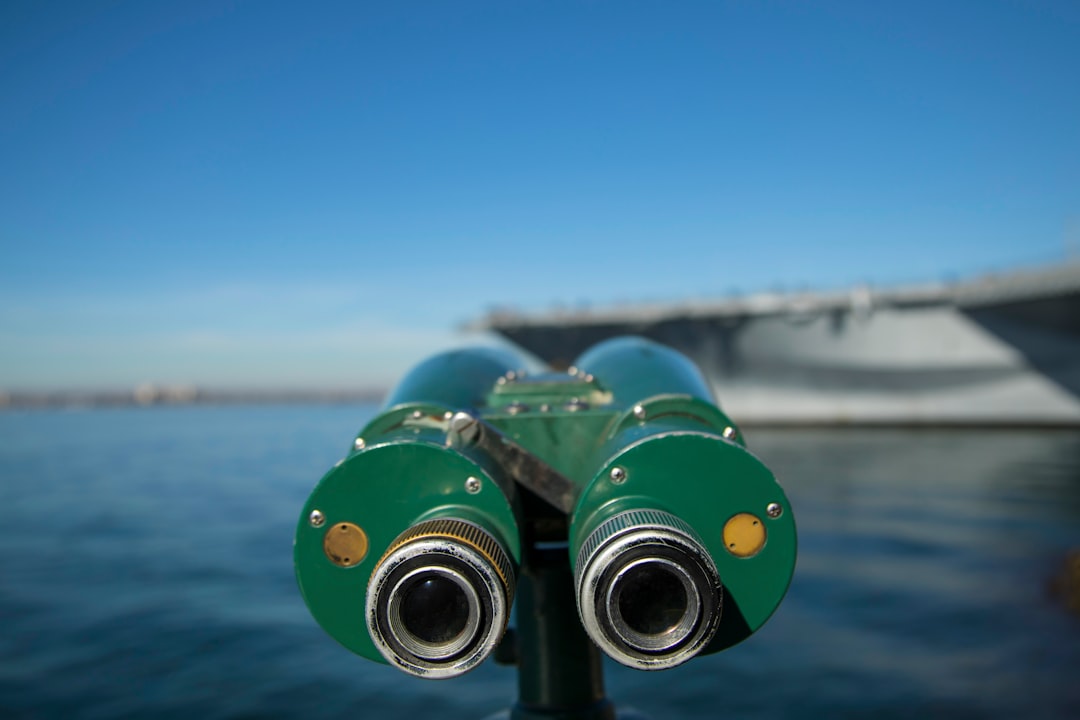Maritime chokepoints are critical junctures in global shipping routes where the passage of vessels is significantly restricted. These narrow passages, such as the Strait of Hormuz, the Suez Canal, and the Malacca Strait, play a pivotal role in international trade and energy transportation. The strategic importance of these chokepoints cannot be overstated, as they facilitate the movement of goods and resources across vast distances.
A significant percentage of the world’s oil and gas supplies traverse these narrow waterways, making them vital to the economies of many nations. The geopolitical significance of maritime chokepoints extends beyond mere logistics; they are often flashpoints for international tensions and conflicts. Control over these passages can confer substantial economic and military advantages, leading to heightened competition among nations.
As global trade continues to expand, the security and stability of these chokepoints have become increasingly paramount, necessitating a comprehensive understanding of their dynamics and the challenges they face.
Key Takeaways
- Maritime chokepoints are narrow, strategically important waterways that are essential for global trade and security.
- Securing maritime chokepoints is crucial for ensuring the uninterrupted flow of goods and resources, as well as for preventing potential security threats.
- Threats to maritime chokepoints include piracy, terrorism, and geopolitical tensions, which can disrupt global trade and stability.
- Naval defense strategies, such as patrols and presence, are essential for protecting maritime chokepoints from potential threats.
- Air defense strategies, including surveillance and air patrols, play a critical role in securing maritime chokepoints and deterring potential threats.
Importance of Securing Maritime Chokepoints
Securing maritime chokepoints is essential for maintaining the flow of international trade and ensuring energy security. The vast majority of global trade relies on maritime transport, with approximately 90% of goods being shipped by sea. Disruptions in these critical passages can lead to significant economic repercussions, including increased shipping costs, delays in supply chains, and potential shortages of essential goods.
For countries heavily reliant on imports, such disruptions can have dire consequences for their economies and national security. Moreover, the security of maritime chokepoints is intrinsically linked to global stability. Many nations depend on the uninterrupted flow of energy resources, particularly oil and natural gas, which are often transported through these narrow passages.
Any threat to this flow can lead to price volatility in global markets, affecting not only the countries directly involved but also those far removed from the chokepoint itself. Thus, ensuring the security of these maritime routes is not just a national concern but a global imperative that requires coordinated efforts among nations.
Threats to Maritime Chokepoints

Maritime chokepoints face a myriad of threats that can jeopardize their security and functionality. One of the most pressing concerns is piracy, which has seen a resurgence in certain regions, particularly off the coast of Somalia and in the Gulf of Guinea. Piracy not only poses a direct threat to vessels but also instills fear in shipping companies, leading to increased insurance costs and rerouting of ships, which can further complicate global trade dynamics.
In addition to piracy, geopolitical tensions and military conflicts can also threaten maritime chokepoints. Nations may engage in aggressive posturing or military maneuvers in these strategic areas, raising the risk of confrontations that could disrupt shipping lanes. Furthermore, non-state actors and terrorist organizations may target these chokepoints to achieve political objectives or instigate broader conflicts.
The potential for sabotage or attacks on critical infrastructure underscores the need for robust security measures to protect these vital maritime routes.
Naval Defense Strategies for Maritime Chokepoints
| Chokepoint | Defense Strategy | Key Metrics |
|---|---|---|
| Strait of Hormuz | Deploying naval patrols and mine countermeasures | Number of naval vessels, mine clearance operations |
| Bab el-Mandeb | Coordinated patrols with international partners | Joint exercises, number of participating countries |
| Malacca Strait | Surveillance and intelligence sharing | Number of maritime surveillance aircraft, information exchanges |
Naval defense strategies play a crucial role in securing maritime chokepoints against various threats. One effective approach involves establishing a visible naval presence in these areas to deter potential aggressors and reassure commercial shipping. This can include deploying naval vessels for patrols and surveillance operations, which serve both as a deterrent and as a means of rapid response should an incident occur.
The presence of naval forces can significantly reduce the likelihood of piracy and other hostile actions. Additionally, international naval coalitions can enhance security efforts at maritime chokepoints. Collaborative operations among allied nations can provide a more comprehensive security framework, pooling resources and intelligence to address threats more effectively.
Joint exercises and training programs can also foster interoperability among naval forces, ensuring that they are prepared to respond swiftly and decisively to any incidents that may arise in these critical areas.
Air Defense Strategies for Maritime Chokepoints
Air defense strategies are equally important in securing maritime chokepoints, particularly given the increasing capabilities of aerial threats. The use of unmanned aerial vehicles (UAVs) for surveillance and reconnaissance has become a vital component of air defense strategies in these regions. UAVs can provide real-time intelligence on maritime activities, allowing for timely responses to potential threats before they escalate.
Furthermore, integrating air defense systems with naval operations can create a multi-layered security approach. Advanced radar systems and missile defense capabilities can protect against aerial attacks or missile threats targeting vessels transiting through chokepoints. By establishing a comprehensive air defense network that complements naval operations, nations can enhance their ability to secure these vital maritime routes against a range of potential threats.
International Cooperation in Securing Maritime Chokepoints

International cooperation is essential for effectively securing maritime chokepoints, as no single nation can address the myriad challenges posed by threats in these areas alone. Collaborative efforts among nations can lead to the sharing of intelligence, resources, and best practices for securing these critical passages. Multilateral agreements and partnerships can facilitate joint operations and enhance collective security measures.
Organizations such as the International Maritime Organization (IMO) play a pivotal role in fostering cooperation among member states to address maritime security challenges. By promoting guidelines and frameworks for best practices in maritime safety and security, the IMO helps create a unified approach to securing chokepoints. Additionally, regional initiatives that bring together neighboring countries can enhance coordination and response capabilities in addressing specific threats unique to particular chokepoints.
Technology and Surveillance for Securing Maritime Chokepoints
Advancements in technology have revolutionized the way maritime chokepoints are monitored and secured. Modern surveillance systems equipped with satellite imagery, radar technology, and automatic identification systems (AIS) enable real-time tracking of vessels transiting through these critical areas. This technological capability allows for early detection of suspicious activities or potential threats, facilitating timely responses by naval forces.
Moreover, emerging technologies such as artificial intelligence (AI) and machine learning are being integrated into maritime security operations.
By leveraging technology in this manner, nations can enhance their situational awareness and improve their ability to respond effectively to incidents at maritime chokepoints.
Economic Implications of Securing Maritime Chokepoints
The economic implications of securing maritime chokepoints are profound and far-reaching. Disruptions in these critical passages can lead to significant financial losses for shipping companies and countries reliant on maritime trade. Increased shipping costs due to heightened security measures or rerouting can ripple through global supply chains, affecting prices for consumers worldwide.
Conversely, effective security measures at maritime chokepoints can bolster economic stability by ensuring the uninterrupted flow of goods and resources. A secure environment encourages investment in shipping infrastructure and fosters confidence among businesses engaged in international trade. As nations recognize the economic benefits associated with securing these vital routes, they are more likely to prioritize collaborative efforts aimed at enhancing maritime security.
Legal and Diplomatic Considerations in Securing Maritime Chokepoints
Legal and diplomatic considerations play a crucial role in shaping strategies for securing maritime chokepoints. International law governs the rights and responsibilities of nations regarding navigation through these critical passages. The United Nations Convention on the Law of the Sea (UNCLOS) provides a framework for addressing issues related to territorial waters, navigation rights, and maritime security.
Diplomatic efforts are equally important in fostering cooperation among nations with interests in specific chokepoints. Negotiations aimed at establishing agreements on shared responsibilities for security can help mitigate tensions and promote stability in these regions. By engaging in dialogue and diplomacy, nations can work towards common goals while respecting each other’s sovereignty and interests.
Case Studies of Successful Defense Strategies for Maritime Chokepoints
Examining case studies of successful defense strategies at maritime chokepoints provides valuable insights into effective approaches for securing these critical areas. One notable example is the multinational naval coalition established to combat piracy off the coast of Somalia. This coalition brought together naval forces from various countries to conduct patrols, share intelligence, and coordinate responses to piracy incidents.
The collaborative efforts significantly reduced piracy incidents in the region, demonstrating the effectiveness of international cooperation. Another case study involves the implementation of advanced surveillance technologies at the Strait of Malacca. In response to rising concerns about piracy and smuggling activities, several Southeast Asian nations collaborated to enhance monitoring capabilities through satellite surveillance and joint patrols.
This initiative not only improved security but also fostered greater regional cooperation among countries sharing interests in securing this vital shipping route.
The Future of Securing Maritime Chokepoints
The future of securing maritime chokepoints will undoubtedly be shaped by evolving geopolitical dynamics, technological advancements, and international cooperation efforts. As global trade continues to expand, the importance of these critical passages will only grow, necessitating ongoing vigilance against emerging threats. Nations must remain proactive in developing comprehensive strategies that encompass naval and air defense measures while leveraging technology for enhanced surveillance capabilities.
Furthermore, fostering international collaboration will be essential in addressing shared challenges related to maritime security. By working together through diplomatic channels and multilateral agreements, nations can create a more secure environment for global trade while safeguarding their economic interests. Ultimately, the future of securing maritime chokepoints hinges on a collective commitment to ensuring safe passage through these vital waterways for generations to come.
In the realm of global trade and security, the strategic importance of maritime chokepoints cannot be overstated. These narrow passages, such as the Strait of Hormuz and the Suez Canal, are vital for the uninterrupted flow of goods and energy resources. An article that delves into the intricacies of maritime chokepoint defense can be found on MyGeoQuest, which provides insights into the geopolitical and economic implications of these critical junctures. For a deeper understanding of how these chokepoints are defended and the challenges involved, you can read more in this related article.
WATCH NOW! Unlocking Disaster: 7 Choke Points That Could Fracture Our Connected World Overnight
FAQs
What are maritime chokepoints?
Maritime chokepoints are narrow channels or strategic waterways that are crucial for global trade and transportation. These chokepoints are often heavily trafficked by ships and are vulnerable to potential threats or disruptions.
Why is defense of maritime chokepoints important?
Defense of maritime chokepoints is important because any disruption or blockage in these key waterways can have significant impacts on global trade, energy supplies, and geopolitical stability. Ensuring the security and stability of these chokepoints is crucial for maintaining the flow of goods and resources around the world.
What are some examples of maritime chokepoints?
Examples of maritime chokepoints include the Strait of Hormuz, the Suez Canal, the Strait of Malacca, and the Bab el-Mandeb strait. These chokepoints are vital for the transportation of oil, natural gas, and other goods, making them strategic and vulnerable to potential threats.
How are maritime chokepoints defended?
Maritime chokepoints are defended through a combination of military presence, surveillance, international cooperation, and strategic partnerships. Navies and coast guards often patrol these areas to deter potential threats and ensure the safe passage of ships.
What are the potential threats to maritime chokepoints?
Potential threats to maritime chokepoints include piracy, terrorism, military aggression, and natural disasters. These threats can disrupt the flow of trade and pose significant challenges to the security and stability of these key waterways.
